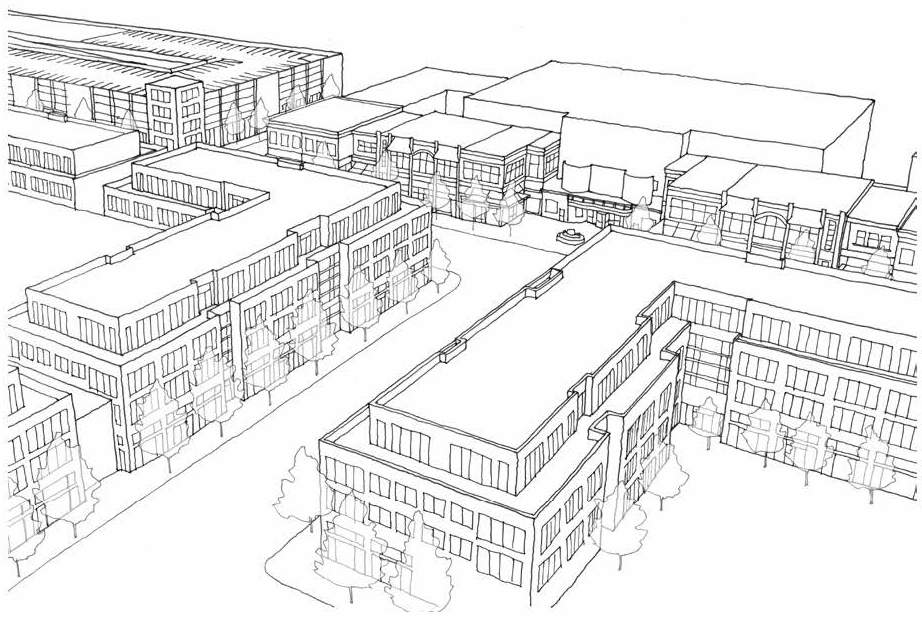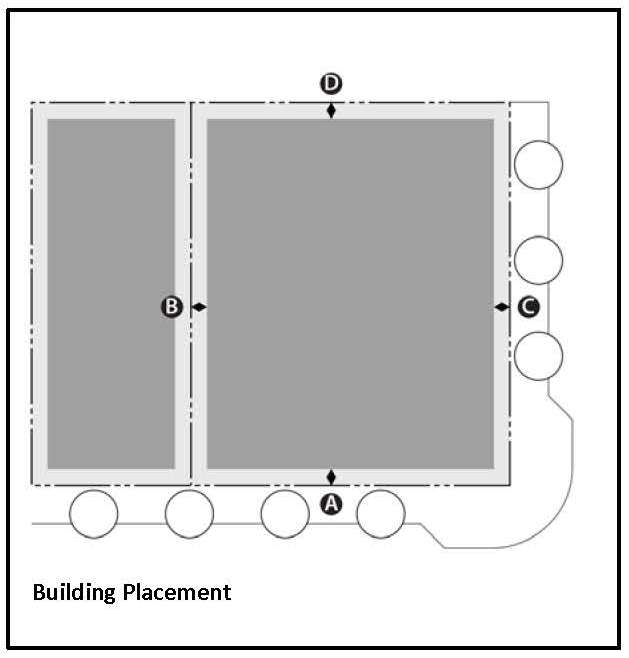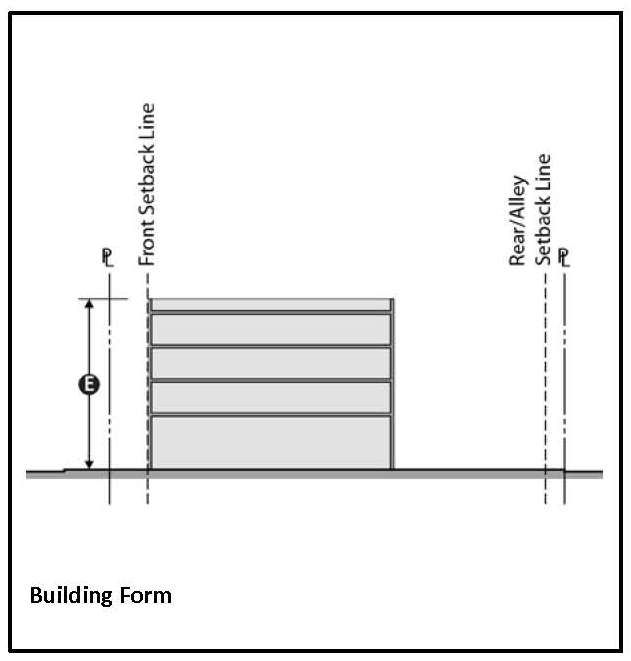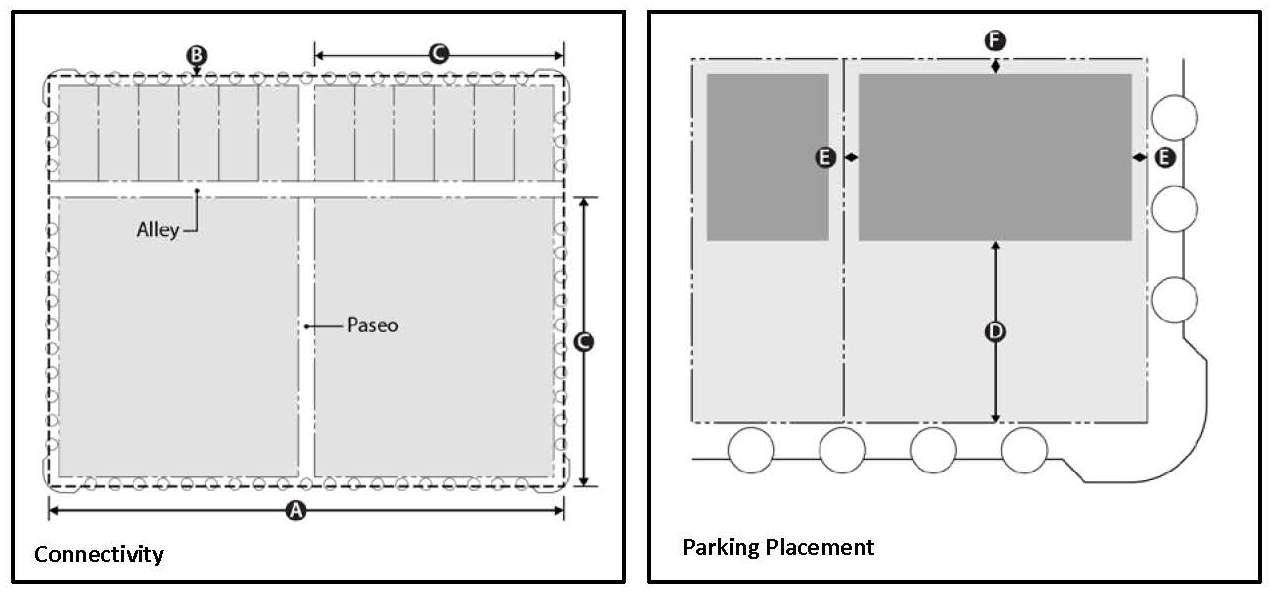Chapter 23.510
REGIONAL TOWN CENTER ZONE STANDARDS
Sections:
23.510.020 Building placement.
23.510.050 Allowed frontage types.
23.510.080 Connectivity and parking.
Prior legislation: Ord. 27-2008.
23.510.010 Purpose.
The purpose of this zone is to provide locations for regional-serving retail, office, and residential uses that provide a vibrant mixed-use setting that fosters positive day and nighttime activity. Development may feature dynamic taller buildings and building complexes (over four stories in height) that are scaled appropriately to create a comfortable pedestrian environment and be compatible with adjacent neighborhoods. Mixed-use development is required and can be designed horizontally or vertically. Design characteristics include public plazas and other gathering places, open storefronts with expansive windows, and a rich mix of uses and tenants. Centers will be designed to provide connections into the surrounding neighborhoods and located to provide easy access to automobiles and public transportation from across the region. [Ord. 4-2017 § 3 (Exh. B)].
23.510.020 Building placement.
|
Setback |
|
|
Primary Building Setback (build-to line) |
|
|
Front setback (A) |
0 feet min. 10 feet max. |
|
Side yard (B) |
0 feet min. |
|
Side street or internal circulation street (C) |
0 feet min. 0 feet max. |
|
Rear yard and alley (D) |
0 feet min. |
|
Accessory Building Placement |
|
|
Front yard |
n/a |
|
Side street |
n/a |
|
Side yard |
n/a |
|
Rear yard and alley |
n/a |
[Ord. 4-2017 § 3 (Exh. B)].
23.510.030 Building form.
|
Building Frontage |
|
|
Primary street |
70% min. |
|
Side street1 |
50% min. |
|
Floor Area Ratio (FAR) |
|
|
Minimum FAR |
0.32 |
|
Maximum FAR |
1.52 |
|
Building Height |
|
|
Minimum height |
20 feet |
|
Maximum height (E) |
65 feet |
1. Building is located within required side yard or side street or circulation street area.
2. Parcels within one-half mile of US 50 are permitted a minimum FAR of 0.35 and a maximum FAR of 2.0.
[Ord. 4-2017 § 3 (Exh. B)].
23.510.040 Allowed use types.
|
Large regional commercial establishments (retail stores, restaurants, entertainment venues, and other citywide-serving retail) |
|
Moderate to large entertainment venues |
|
Office uses (primary or secondary uses) |
|
Medium density residential (6.1 to 18 units per acre) |
|
High density residential (20.1 to 40 units per acre) |
|
High density residential with transit bonus (20.1 to 80 units per acre) |
|
Transit-oriented developments when adjacent to fixed station locations |
[Ord. 4-2017 § 3 (Exh. B)].
23.510.050 Allowed frontage types.
Allowed frontage types are associated with each streetscape type. See preferred streetscape types below and in Chapter 23.513 RCMC (Streetscape Type and Frontage Type Standards). [Ord. 4-2017 § 3 (Exh. B)].
23.510.060 Streetscape types.
|
Major Arterial |
|
Minor Arterial |
|
Nonresidential Collector Street |
|
Residential Collector Street |
|
Main Street |
|
Nonresidential Local Street |
|
Standard Residential Street |
|
Minor Residential Street |
|
Alley |
|
Paseo |
|
Multi-Use Path |
[Ord. 4-2017 § 3 (Exh. B)].
23.510.070 Density.
|
Minimum density |
6.1 du/acre |
|
Maximum density |
20 du/acre |
[Ord. 4-2017 § 3 (Exh. B)].
23.510.080 Connectivity and parking.

|
Connectivity3 |
|
|
Maximum block length (A) |
660 feet |
|
Maximum block perimeter (B) |
2,640 feet |
|
Maximum pedestrian block length (C) |
350 feet |
|
Parking Placement |
|
|
Setbacks from public or private streets (D) |
Rear 50% of lot |
|
Side yard setback (E) |
0 feet min. |
|
Rear yard and alley setback (F) |
5 feet min. |
|
Required Spaces |
|
|
Parking ratios must meet city standards as identified in Chapter 23.719 RCMC. |
|
3. Pedestrian connections must comply with the specifications for paseos or multi-use paths outlined in Chapter 23.513 RCMC (Streetscape Type and Frontage Type Standards).
Internal circulation streets are private or public streets on commercial or residential lots which access either buildings or parking areas. Internal circulation streets must be provided every 350 feet along any one block face (minimum) and must comply with the specifications for main street, nonresidential collector street (commercial), standard residential street, or minor residential street outlined in Chapter 23.513 RCMC (Streetscape Type and Frontage Type Standards).
Pedestrian connections and internal circulation streets must connect on at least two ends to public or private pedestrian or vehicular routes.
[Ord. 4-2017 § 3 (Exh. B)].


